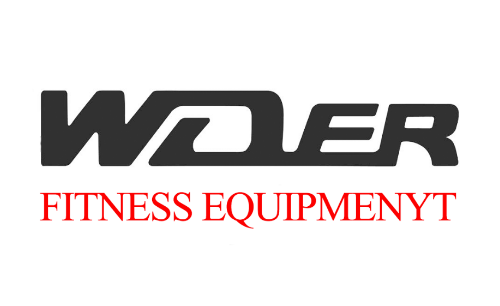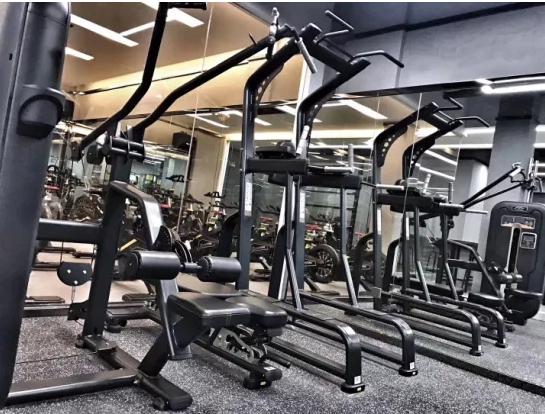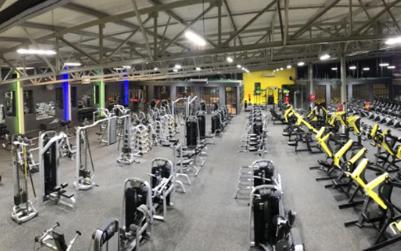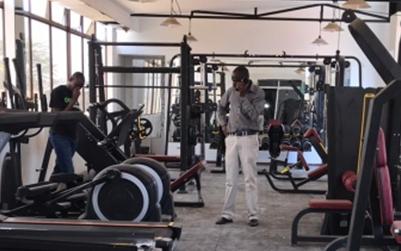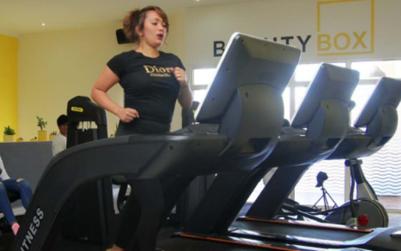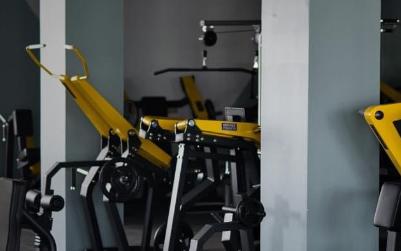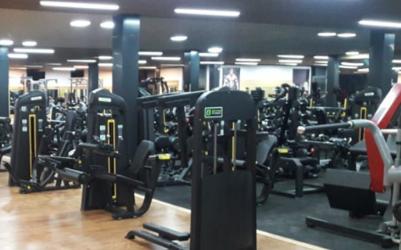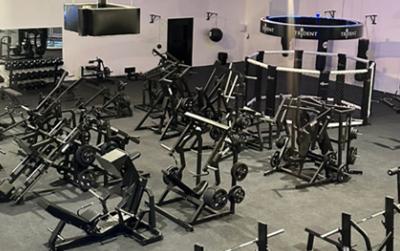How to Perfect Your ISO Low Row Technique for Maximum Back Gains
The ISO low row is an essential exercise for developing strength and muscle in your back. Whether you’re a seasoned lifter or just starting out, mastering the ISO low row technique can significantly enhance your workout results. Here, we’ll explore key components to perfect your technique and maximize your back gains.
Click check More High Quality Gym Equipment For your Need
Understanding the Basics of ISO Low Row
Before diving into technique, it’s important to understand what the ISO low row entails. This exercise primarily targets the following muscle groups:
- Latissimus dorsi
- Rhomboids
- Trapezius
- Biceps
The ISO low row is performed on a cable or machine where the resistance is fixed, allowing for isolated muscle activation. This can lead to greater muscle engagement and hypertrophy, especially when performed correctly.
Setting Up Your ISO Low Row
The setup is crucial for performing an effective ISO low row. Here’s how to prepare yourself:
- Choose the Right Equipment: Use a cable machine or a low row machine. Ensure the weight is appropriate — start light to focus on form.
- Adjust Seat Height: The seat should be set so that your feet are flat on the ground and your knees are slightly bent, allowing for complete range of motion.
- Grip the Handles: Use an overhand grip, keeping your wrists straight. Ensure your elbows are close to your body while holding the handles.
Executing the ISO Low Row Technique
Now that you’re set up, here’s how to execute the ISO low row for maximum effectiveness:
- Start Position: Sit upright with your chest out and shoulders back. Maintain a neutral spine throughout the movement.
- Engaging Your Core: Activate your core muscles to stabilize your torso during the row.
- Pull the Handle: Initiate the movement by retracting your shoulder blades and pulling the handle towards your torso. Keep your elbows close to your body.
- Hold and Squeeze: At the peak of the row, hold for a second and squeeze your shoulder blades together for maximum contraction.
- Controlled Release: Slowly return to the starting position while maintaining tension in the back muscles — avoid letting the weights drop quickly.
Common Mistakes to Avoid
Even experienced lifters can make mistakes that hinder their performance. Here are some common errors to watch out for:
- Using Excessive Weight: Lifting too heavy can compromise form and lead to injury. Start lighter to focus on technique.
- Leaning Back: Avoid arching your back or leaning too far; keep your torso stationary throughout the movement.
- Neglecting Breathing: Remember to exhale as you pull and inhale as you release. Proper breathing supports better form and muscle engagement.
By mastering these techniques, you can harness the full power of the ISO low row and significantly boost your back gains. Regular practice combined with awareness of your form will help ensure that you are getting the most out of every session. Stay consistent, and enjoy the process of building a strong, defined back!
What You Need to Know About ISO Low Row for Optimal Results
The ISO Low Row is an essential exercise for anyone aiming to develop a strong, well-defined back. Not only does it target key muscle groups, but it also contributes to better posture and improved overall strength. In this section, we will cover the fundamental principles of the ISO Low Row, its benefits, and essential techniques to maximize your gains.
The Muscles Engaged in ISO Low Row
Understanding which muscles are activated during the ISO Low Row can help you appreciate its significance in your workout routine. This exercise focuses on several muscle groups, including:
- Latissimus Dorsi: The primary muscle engaged, responsible for the width of your back.
- Rhomboids: Located between your shoulder blades, they help in retracting the scapula.
- Trapezius: Assists in moving, rotating, and stabilizing the shoulder blades.
- Posterior Deltoids: These shoulder muscles are activated during the pulling movement.
- Biceps: Secondary muscles that contribute to elbow flexion.
Key Benefits of the ISO Low Row
The ISO Low Row isn't just about aesthetics. It provides various benefits that enhance physical performance and reduce the risk of injury. Here are some of the most notable advantages:
- Improved Posture: Strengthening the back muscles helps combat slouching and promotes better spine alignment.
- Enhanced Grip Strength: The exercise requires a firm grip, which can improve overall strength in other lifts.
- Injury Prevention: A strong back supports the spine and can help prevent injuries related to physical activities.
- Balanced Development: ISO Low Rows contribute to an equally developed upper body, preventing muscle imbalances.
- Versatility: This exercise can be adjusted for different fitness levels and can be performed using various equipment.
Perfecting Your Technique for Optimal Performance
To reap the full benefits of the ISO Low Row, proper technique is crucial. Follow these guidelines to ensure you're executing the movement correctly:
- Starting Position: Sit at the machine with your feet planted firmly, and grasp the handles with a neutral grip.
- Posture: Keep your back straight and core engaged throughout the movement.
- Pull: Draw the handles towards your torso in a controlled manner, squeezing your shoulder blades together.
- Range of Motion: Aim for full range of motion by fully extending your arms before each pull.
- Breathing: Exhale as you pull the weight towards you and inhale as you return to the starting position.
Incorporating the ISO Low Row into your workout routine can help you build a robust back while simultaneously improving your functional strength. Whether you're a seasoned athlete or just starting, mastering this exercise will undoubtedly enhance your overall fitness and posture. So grab that handle, focus on your form, and get ready to experience the numerous benefits the ISO Low Row has to offer.
Mastering the ISO Low Row: Tips for Effective Back Workouts
The ISO low row is a powerful exercise that targets multiple muscles in the back, helping you to build strength and improve posture. Mastering this technique can lead to significant gains in your back development. In this section, we will provide tips to optimize your ISO low row and ensure that you reap the maximum benefits of this essential movement.
Understanding the Basics of the ISO Low Row
Before diving into the tips, it’s crucial to understand what the ISO low row is and how it functions within your workout routine. The exercise typically uses a cable machine or resistance bands, allowing for a controlled pull towards your body.
- Primary Muscles Targeted: The ISO low row primarily targets the latissimus dorsi, rhomboids, trapezius, and rear deltoids.
- Movement Mechanics: This exercise involves pulling the handle towards you while maintaining proper posture, emphasizing a mind-muscle connection with your back.
- Benefits: Improved strength, enhanced muscular endurance, and better overall posture.
Setting Up for Success
To get the most out of your ISO low row, it’s essential to set up correctly. Here are some key considerations:
- Adjust Seat and Height: Ensure the seat height is adjusted so that your arms can fully extend without straining.
- Grip Variety: Experiment with different grip positions (wide, narrow, or neutral) to target different parts of the back.
- Foot Position: Keep your feet firmly planted on the ground for stability, enabling a strong base for the movement.
Executing the Movement with Precision
Once you are set up, focus on executing the movement with precision. Follow these steps to ensure effective performance:
- Engage Your Core: Activate your core muscles before starting the pull to protect your lower back and maintain proper posture.
- Pull with Intention: As you pull the handle, think about drawing your elbows back rather than just moving your arms. This encourages better engagement of your back muscles.
- Squeeze at the Peak: At the end of the movement, hold and squeeze your shoulder blades together for a second before slowly releasing the tension.
Common Mistakes to Avoid
To master the ISO low row, it’s essential to avoid common pitfalls that can impede your progress:
- Rounding Your Back: Keep your spine neutral and avoid hunching over; maintain a straight back for maximum effectiveness.
- Using Excessive Weight: Start with a manageable weight to ensure proper form. Progressively increase the load as you become comfortable with the movement.
- Neglecting Tempo: Don’t rush through the movement. Control your speed to enhance muscle engagement and focus.
Mastering the ISO low row isn’t just about strength; it’s about technique. Proper execution, setup, and awareness of mistakes can lead to incredible back gains. Incorporate these tips into your workouts to ensure that you are performing the ISO low row effectively, paving the way for a stronger and more sculpted back.
The Benefits of Incorporating ISO Low Row into Your Routine
The ISO Low Row is a powerful exercise that can significantly enhance your back training regimen. Whether you're an experienced athlete or a fitness enthusiast, understanding the advantages of this exercise can make a substantial difference in your overall strength and physique. Below are some key benefits of incorporating the ISO Low Row into your routine.
Enhanced Muscle Activation
One of the most prominent benefits of the ISO Low Row is its ability to effectively engage multiple muscle groups in your back. This exercise primarily targets the following muscles:
- Latissimus Dorsi
- Rhomboids
- Trapezius
- Infraspinatus
- Teresa Major
By engaging these muscles, the ISO Low Row helps create a balanced and well-developed upper body. Strengthening these areas is crucial not only for aesthetics but also for functional movements.
Improved Postural Alignment
Incorporating the ISO Low Row exercise into your routine can help improve your posture. Many people struggle with poor posture due to sedentary lifestyles or imbalanced training routines. The ISO Low Row encourages proper alignment by:
- Strengthening the upper back muscles.
- Balancing chest and back strength.
- Promoting stability in the shoulder joints.
With better posture, you'll experience greater comfort in daily activities and reduced risk of injury during exercises.
Greater Core Stability
While primarily a back exercise, the ISO Low Row also requires significant engagement from your core. Holding the proper form throughout the movement demands Stability, which can lead to the following benefits:
- Increased strength and endurance of core muscles.
- Enhanced balance during other exercises.
- Improved overall performance in athletic activities.
By strengthening your core while working your back, the ISO Low Row helps create a cohesive training approach that benefits every aspect of your fitness regimen.
Versatility in Training
The ISO Low Row is an incredibly versatile exercise that can be adjusted to suit different fitness levels and goals. Here are some ways you can modify this exercise:
- Change the grip—using a wide or narrow grip can target different muscles.
- Adjust the resistance—varying weights can help you build strength progressively.
- Incorporate different tempos—manipulating your speed can lead to more muscle fatigue and growth.
This adaptability makes the ISO Low Row a valuable addition to any workout plan, catering to both beginners and advanced lifters alike.
In conclusion, the ISO Low Row exercise presents a multitude of benefits for anyone aiming to enhance their back workouts. From improved muscle activation and postural support to increased core stability and training versatility, the advantages are vast. By integrating this exercise into your routine, you can take significant strides toward achieving a stronger, healthier back. Whether you are lifting for aesthetics or functional performance, the ISO Low Row deserves a prominent place in your training arsenal.
